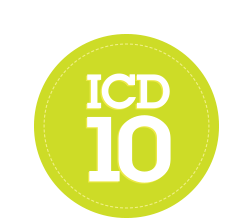
As an agency that works primarily with healthcare clients, I think we can say with some authority, healthcare communications has always been about increasing the bottom line. That’s not to say that healthcare organizations are trying to get people to get unnecessary services. But they do want to make sure that everyone who could possibly use their services knows about them, and gets those health-boosting services from them…not the other guy. Money out for communications<Money in for procedures/visits/tests. It’s a pretty simple formula. But when healthcare reform starts setting reimbursement levels based on patient outcomes around 2014, and premium paying patients are forced to become educated healthcare consumers, that “come here we’re the best” message isn’t going to be enough anymore. What now? We take our shot at prognosticating, here.
 1) The answers will be the same. The questions will just be different.
1) The answers will be the same. The questions will just be different.Today, when we start a campaign, we ask “how can we help drive growth at this institution?”…more people in the beds who saw our billboard, more people at our health fair converting into patients, more patients coming in for tests after getting one of our mailers. It’s a wonderful, but disconnected strategy. In the future, we will be asking “How can we improve patient compliance?” How can you get that teenage diabetic to take their insulin injections at the right time, which will keep her out of your surgical suite in 15 years. How do you keep that elderly heart patient taking his medicines, eating right, and exercising, so he won’t come back to your emergency room with chest pains in three months. The financial rewards for this will come when Medicare doesn’t lower your overall reimbursement levels because you have too much recidivism at your hospital or practice. The outcome will still be a healthy bottom line, and even improved patient loyalty, but the route to those goals will take us all in a completely different direction.
2) Patients won’t be content with “call me in six months to check in” anymore.
In today’s world, a patient with a chronic condition is told to see their doctor every three or six months. The doc runs another round of tests, has a 10-minute discussion in the patient visit, writes out some prescriptions and, barring any acute flare ups, that’s it. There is absolutely no attempt to communicate with the patient in between visits, often when the real trouble starts. Patients leave the office confused, clutching their poorly xeroxed instruction papers, and almost immediately start slacking off on their regimens. They come back to the physician, no better off than they were six months ago.
Luckily, there are a lot of ideas about how to fix this problem, coming from people like ePatient Dave and the Society for Participatory Medicine, the American Telemedicine Association, and many others. First among them is the idea of prescribing patients information…pointing them to online patient forums in their disease group, for instance. Putting billable, scalable mobile monitoring solutions in place that connect doctors to patients is another hotbed of activity. And creating a new line of healthcare professionals that work strictly on one to one patient education, stationed in every practice, are another.
So far, there is a gold rush of development in private industry to develop solutions with technology…from third party websites, to apps, to games and more. In the future, for this all to work, healthcare institutions will need to get off the sidelines and either develop their own, or incorporate third party systems that will link these resources directly into their healthcare delivery system. Seamless delivery of curated healthcare information to the patient, through their doctors/hospitals, is the only way to ensure this problem gets addressed.
3) Healthcare information will become portable, mobile, and ultimately, more useful.
Patients are going to be taking their healthcare information into their own hands–literally. And we’re not just talking about electronic health records, either. We’re talking about using apps and games that will take information out of their ambient environment, and turn it into actionable tips that will help them be healthier and live better. Exhibit A: a beta community known as Asthmaopolis, where your inhaler becomes a GPS transmitting device that records when and where it’s being used. You and your doctor have access to that information. But the beauty of it is, they also strip your personal information out and put all the Asthmaopolis users into a community. So you can see a map showing where every other Asthmaopolis user is using their inhaler, in whatever city you happen to be in. Would this kind of information help asthma sufferers live better and avoid attacks? You bet. Add this to other devices, like tennishoes that broadcast your run lengths and times, and phone apps that issue medication reminders and measure compliance for clinical studies, and bracelets like Jawbone that monitor your eating and sleeping patterns, for instance. It’s easy to see that the tools we need to be healthy lie far beyond the doctor’s office.
But that’s not to say they have nothing to do with the average healthcare communicator. Think of the possibilities if we start working with, and not against, these kind of advances. You could run contests among your patients for the most miles walked. Or get promotional partners like restaurants, exercise equipment shops and the like to give special discounts and offers to people hitting certain health milestones. But most of all, just being able to present the data these devices collect to your doctor between and during visits is an invaluable clinical tool.
4) Physicians will demand protected time, or compensation, for their participation with social media.
It’s easy to stand back and admire the work of gifted doctor-communicators like Dr. Wendy Sue Swanson, who’s YouTube videos save her practice time by answering common pediatric questions, and who’s folksy, informative columns grace Parents Magazine each month. But, as she told us at the Mayo Clinic Health Social Media Conference, she is able to be so productive is because she has at least two days a week for social media/writing/speaking, and three days a week seeing patients. But the stark reality is, even salaried physicians feel married to their pagers and their practices. Most don’t have these kind of cozy arrangements. And the “just do it” mantra won’t count here.
As hospital systems continue to buy up doctor’s practices, now is the perfect time to start carving out a certain portion of their day/week that’s protected for patient communication/social media activities. Or perhaps, there is a nurse practitioner in each physician’s office who handles these activities as part of her job. Or, perhaps a hospital system can start pumping good curated social health information through system-wide channels that all the doctors share–and prescribe–in their practices. The good news is, physicians are on social media in record numbers, and many of them are starting to see the benefit of talking in social media with each other, as well as their patients. It won’t be a hard sell if it’s packaged appropriately, and they get the proper training.
5) Social health tools will be expected to actually do something.
Right now, we’re all having great fun experimenting with Twitter, Facebook, on-line communities, texting campaigns and location based marketing (Foursquare, QR codes). But rarely do they step beyond promoting a specific service, a call to action, or a general awareness message. Clinicians and hospital leadership won’t truly get on board until we’ve found a way to make these tactics produce a result that is useful to them. For instance, do their patient visits go better and faster when patients have access to videos of the doc answering their common questions? Do patients ask better questions and make better decisions when their doctor has pointed them to the information they need to choose treatment options? How many medical mistakes and misdiagnoses are avoided because a patient consulted an online forum of patients sharing the same symptoms? How many referrals did your specialist get, because he posted great opinion pieces on new treatments in a national disease forum, or on his website?
There are daunting obstacles to all this, to be sure, HIPPA and operational concerns chief among them. But I, for one, am excited about what these new changes can bring. It is finally our chance to step off the sidelines as communicators, and directly into the action known as “getting clinical results.” What do you think?
image credit: Healthcare Reform Magazine


 1) The answers will be the same. The questions will just be different.
1) The answers will be the same. The questions will just be different.






